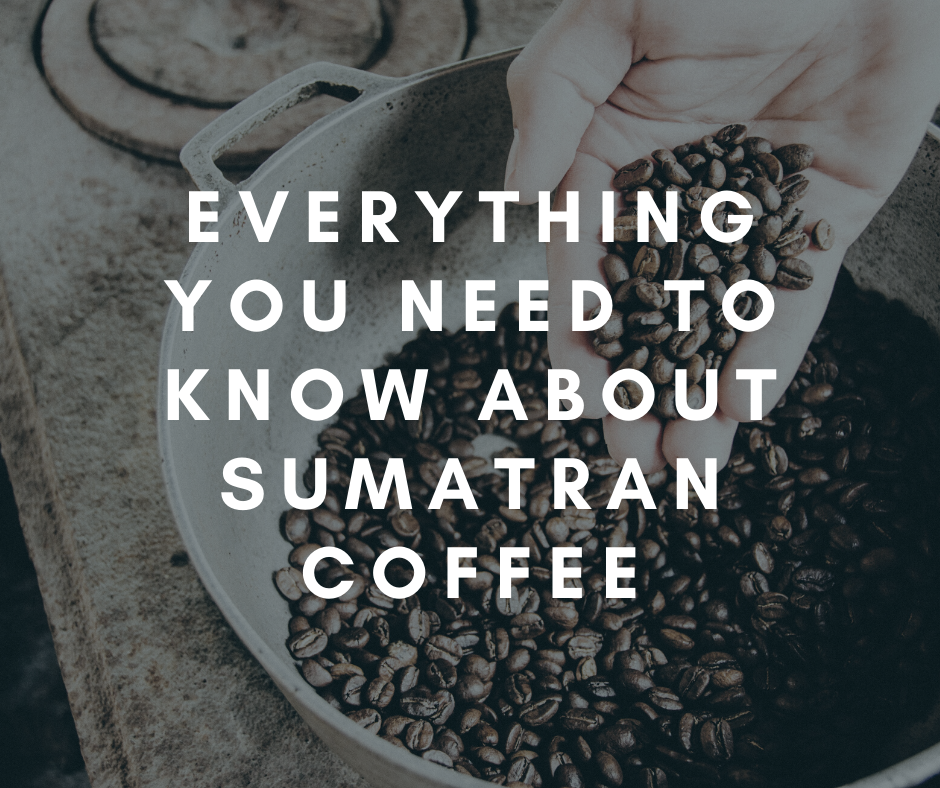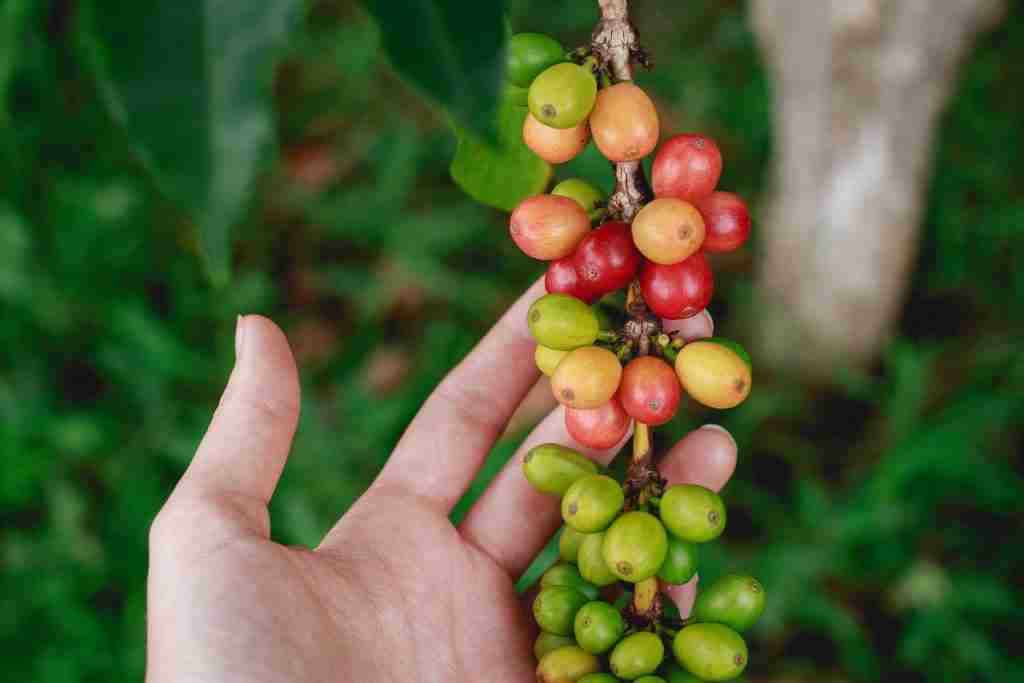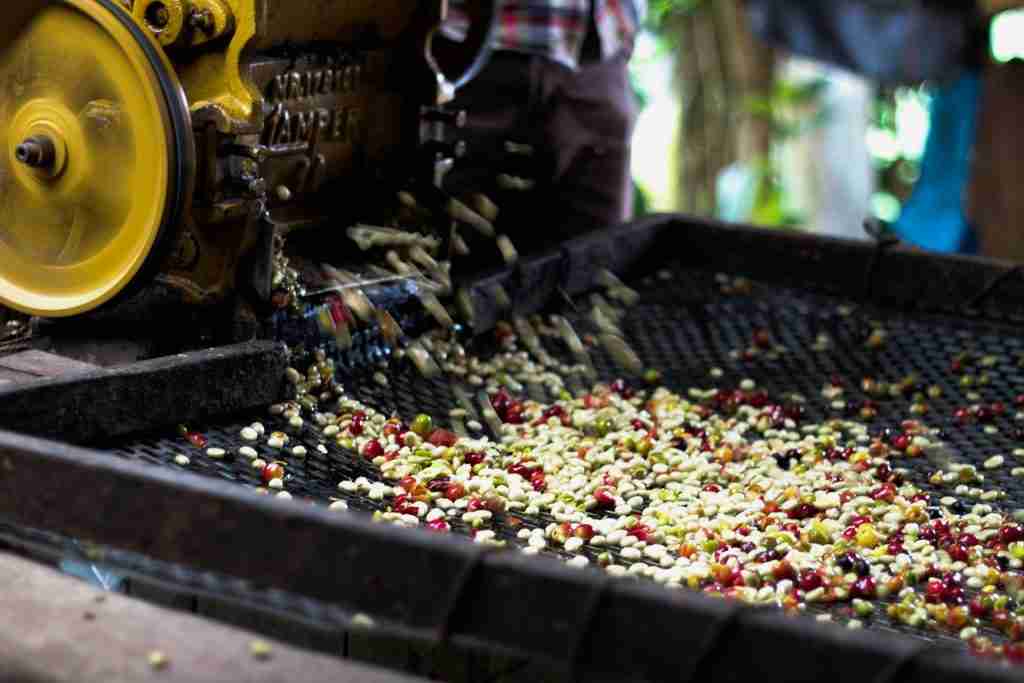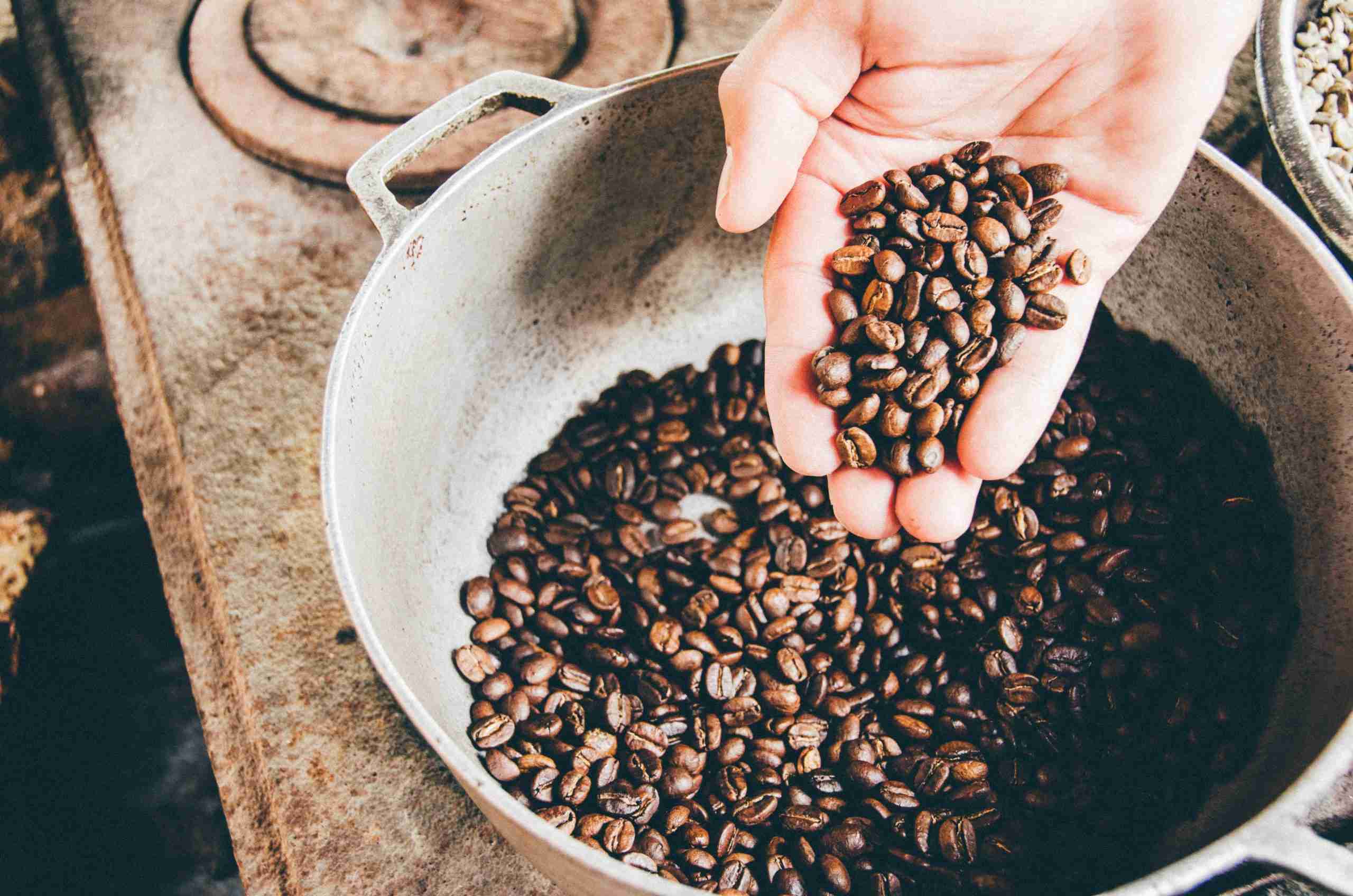
A quick show of hands for those who absolutely love Sumatran coffee – we bet it was love at first ‘sip’ for you! Coffee lovers can instantly recognize rich coffee beans and their amazing tastes.
Of the most exquisite coffee beans in the world, one of the most popular types is Sumatran coffee. The origin of this coffee can be traced back to Sumatra, one of the islands belonging to the cluster of Indonesia. Sumatra is the sixth-largest island in the world and is home to almost 50 million people.
Apart from having the largest volcanic lake in the world- Lake Toba, Sumatra is known for the most popular product it churns out – Sumatran coffee.
Sumatran coffee is known for its distinct taste and is an absolute hit among coffee lovers worldwide. If you too love experimenting with different types of coffees from parts of the world, you definitely need to give Sumatran coffee a try.
But before that, let’s tell you all you need to know about the heavenly Sumatran coffee. Let’s get started:
How is Sumatran Coffee Grown and Processed?
As we know, the environment in which coffee is cultivated and the method that is used to grow it are two important factors that affect the taste of the coffee. So let’s understand where Sumatran coffee gets its distinct flavor.

Sumatran coffee is mostly wet-hulled, which is a coffee-growing method specific to certain parts of the world only. Wet hulling is also known as ‘Giling Bashan’, which is the most common coffee processing method in Sumatra.
The process begins with farmers removing the skin of the coffee cherry immediately after they pick them. The skin is removed using homemade machines, after which the skinned beans are kept overnight in woven bags to ferment.
The next day, the farmers wash the remaining fruit, while the beans are left to partially dry in the yard. This coffee is then ready to be shipped, after which the parchment is removed, and the beans are further left to dry. After the beans are dried just as much as required, they are ready to be exported.
Once the shipment arrives at the destination port, they are again dried (for the third time) at the port city.
Typically, coffee in other parts of the world is dried with pulp parchment. Sumatran coffee is hulled when it is wet, at about 40% moisture.
At this stage, you can even bite into a coffee bean if you chew into it! Apart from the wet hulling, the local climates, microclimates, microbes, and plant varieties, too, contribute to the exceptional taste of this insane coffee.
What are the Benefits of Wet Hulling Coffee Beans?
The wet hulling process leaves the Sumatran coffee beans moist for a long time. It involves three drying stages, which ensure the moisture level in the coffee beans remains above 11% for a longer time.
Wet hulling is popular in the Sumatra islands as the climate does not permit the farmers to dry the beans completely.

Sumatran coffee cherries are a lot more wetter (as compared to other coffee varieties) when they are hulled.
The beans actually take a beating during the whole process. The slightly damaged coffee cherries only enhance the taste of the coffee.
While the Sumatran weather is perfect for coffee plantations to thrive, it poses a problem in the post-processing stages. One moment the sun shines brightly over the Sumatran island, and the next moment it rains heavily.
As complicated as this sounds, all we’re concerned with is the taste of the coffee! As long as the coffee tastes (and smells) amazing, we have nothing to complain about, right?
The Tempting Flavor of the Sumatran Coffee Beans
The whole process of drying the Sumatran coffee beans is tedious but worth all the effort!
After all, we get coffee beans that smell heavenly and taste exquisite. The natural process of drying the beans and their extended drying time ensures the coffee beans have a subtle flavor and earthy aroma.
Sumatran coffee beans are an amazing blend of mossy, wild, spicy, and mushroomy tastes.

Every coffee lover would interpret the taste of Sumatran coffee differently – so you won’t get one single answer as to how Sumatran coffee really tastes!
The Sumatran coffee beans are already packed with flavor, and the three-layered post-processing stage of the beans only enhances the taste of the beans.
Creamy, sweet with a hint of butterscotch – that’s the bold and funky taste of the coffee – which every coffee lover should definitely try.
We’re sure you’ll fall in love with it! As someone trying Sumatran coffee for the first time, you may require some time to acquire a taste for the dark and broody taste of this coffee.
We freshly roast our Sumatran coffee beans whenever somebody places an order. We prefer beans from Sumatra roasted dark to help bring out the rich, sweet, caramel/butterscotch flavors. You won’t be able to put down your cup after brewing some of our Sumatran coffee beans.
Is Sumatran Coffee a Dark Roast Coffee?
Coffee experts say that Sumatran coffee beans need to be roasted within three months of harvesting. As it is crudely processed, the beans have a shorter shelf life than regular coffee beans. However, not all Sumatran coffee beans are wet-hulled. If not wet-hulled, the beans are either washed or dry process.
The taste of the coffee is still intact, and the beans still taste magnificent.
Sumatran coffee is often known to be a dark roast coffee, but the location of the coffee has nothing to do with the roast profile of the coffee.
The roast profile of the coffee completely depends on the person roasting the coffee. But as Sumatran coffee is expected to be of a dark roast profile, roast-masters typically choose the dark roast only.
As Sumatran coffee has a rich taste, it is one of the most sought-after types of coffee by top coffeehouses. Huge quantities of Sumatran coffees are purchased by Starbucks to be used as a base in their espressos and range of coffees.

Starbucks particularly roasts the coffee very dark to ensure the taste of their coffees is up to the mark. Starbucks across the world serves only the Arabica type of coffee.
Popular Varieties of Sumatran Coffee
The three main coffee varieties spruced from Sumatra are Mandheling, Lintong, and Gayo.
Mandheling is cultivated in the northern plains of Sumatra and is known to be the best coffee beans produced in Sumatra. It is one of the rare Indonesian coffee varieties and is named after the Mandheling people who grew this coffee variety.
These beans can be brewed into a rich, strong cup of coffee – just like most coffee lovers across the world do!
The Lingtong beans are grown on a high plateau that overlooks Lake Toba. Like other Sumatran coffee beans, this variety also has a rich taste and aroma. The Gayo beans are grown in the northern Aceh region and are known for their intense flavor.
How to Brew Sumatran Coffee Beans?
Each one of us has our preferences when it comes to coffee. Sumatran beans should definitely be one of the coffee beans in your collection.
The strong and bold flavor of the Sumatran beans is apt to brew those espresso shots. Brewing wet beans can be a task, but with a bit of practice, you can definitely nail the perfect flavor too.

You can use an espresso machine, or if you don’t have one, you can also cold brew the coffee.
Cold brewing the coffee allows the flavors to develop slowly, enhancing the taste and lowering the acidity. Cold brews are packed with antioxidants and are easier on your teeth and stomach, as compared to your usual cups of coffee.
Interesting Facts About Sumatran Coffee
Now that you’ve understood how Sumatran coffee beans acquire the taste and aroma they have, let’s find out some more exciting facts about Sumatran Coffee:
- Indonesia is the fourth largest coffee producer in the world and is followed only by Brazil and Vietnam. Most of the coffee produced by Indonesia comes from the Sumatran islands.
- The most popular varieties of Sumatran coffees are Arabica and Robusta coffees. Both these coffees are cultivated in the fertile regions of North Sumatra. The majority of the districts in North Sumatra produce Arabica coffee, while the other regions primarily focus on Robusta coffee.
- Sumatran coffee has a unique taste only because of the way it is grown. It has a smooth texture and smells sharp and comes with a beautiful blend of aromas as well. The semi-washed and dry-processed coffee helps retain its amazing taste. It is also planted in elevation, and the ideal soil contours make sure its taste stays intact even when it is exported across the world.
- Sumatran coffees are completely organic and are grown without using any chemicals. This also affects the harvesting rates, slowing down coffee production. Chemicals can definitely help boost the coffee harvest, but the Sumatran farmers prefer using manure. Also, the coffee farmers are not trained and counseled to grow and pick coffee – which is another issue when it comes to the low harvest of coffee beans.
- Just like the farmers prefer growing the coffee organically, they also ensure the coffee is processed the traditional way, with minimal chemical intervention. This ensures that the taste and aroma of the coffee are intact and just as required. Like other Indonesian coffees, Sumatran coffees are also authentic and unique, thanks to the traditional processing methods used.
- Apart from Arabica and Robusta coffees, there’s another popular coffee from the Sumatran islands – the Luwak coffee. In fact, it is one of the most expensive coffees in the world. It is priced at a whopping USD 150 per 500 grams! The Luwak coffee is obtained from mongoose droppings, and this breed of mongoose loves to eat coffee beans. It is popular not only in Indonesia but also across the world, thanks to its unique taste and fragrant aroma.
- Arabica coffee is another popular variety of Sumatran coffee. It is grown in one of the most fertile regions of Sumatra, at an elevation of 1300 m above sea level. It is one of the oldest coffee cultures and has been around since the Dutch colonial level. Even after all these years, Arabica coffee is still extremely popular across the world.
- Over the years, the domestic consumption of coffee in Indonesia continued to stay the same as Indonesians typically preferred tea over coffee. But in the past few years, the domestic consumption of different coffee varieties in Indonesia (including Sumatran coffee) has increased. This is courtesy of the rise in the cafe culture and the changing preferences of the younger generations.
Summing Up
If you’re one who cannot kickstart your day without a cup of strong, hot coffee, you surely need to try out the Sumatran coffee varieties. The coffee beans from this region come with distinct and unique flavors, and you’re sure to find a variety that best fits your taste as well! So what are you waiting for? Get your cup of Sumatra coffee brewing right away!
Are you now interested in trying some amazing single-origin Sumatran Coffee beans? Try some of our freshly roasted Sumatran coffee!

